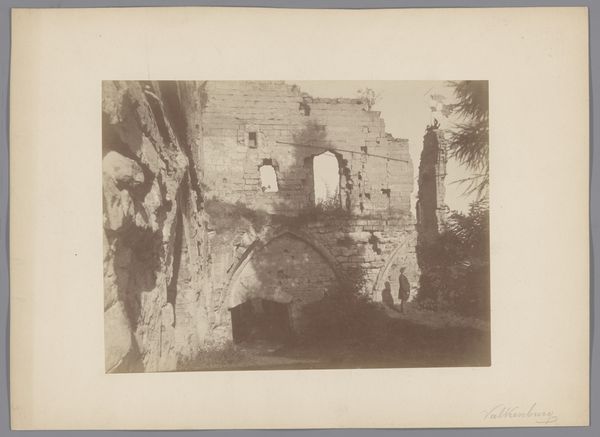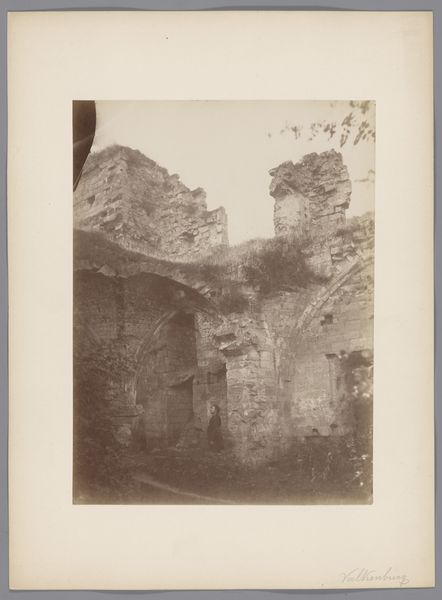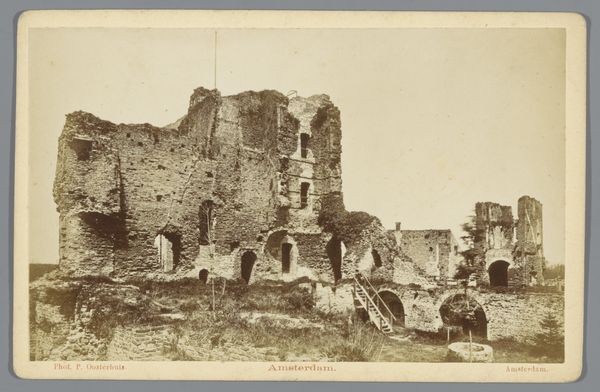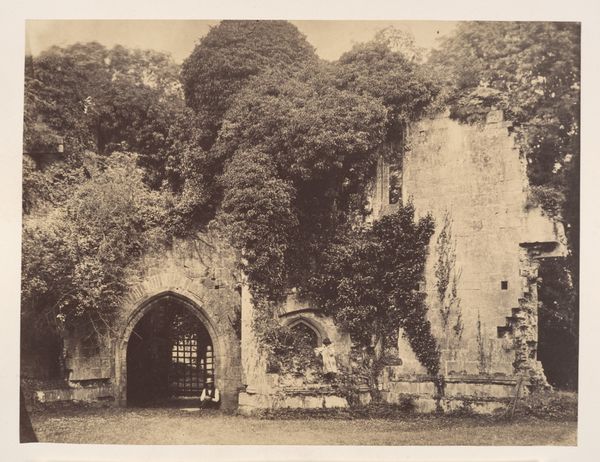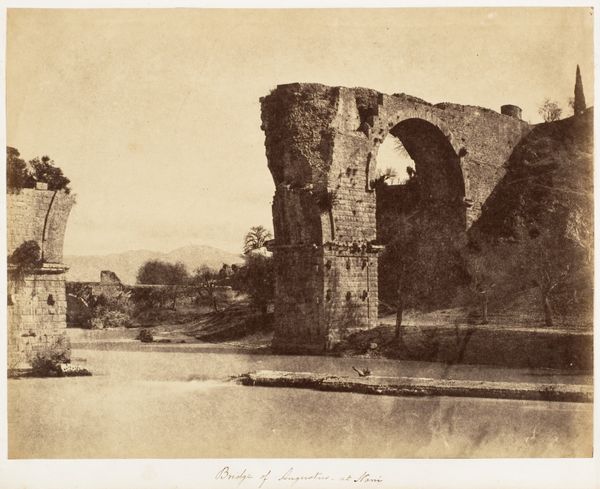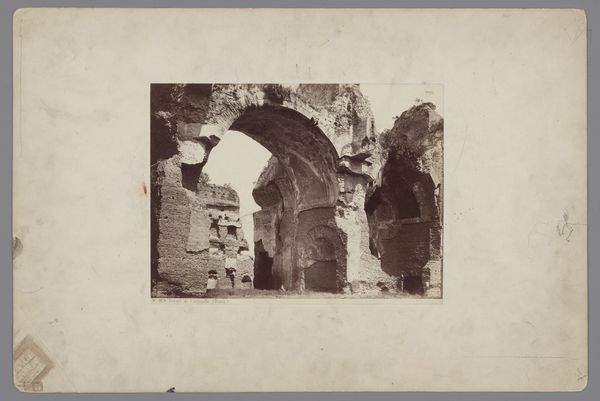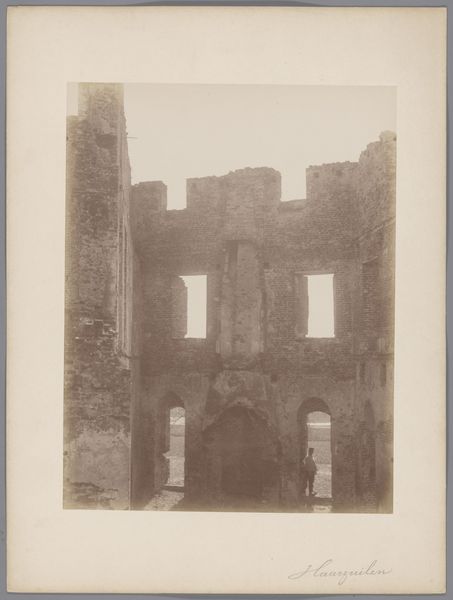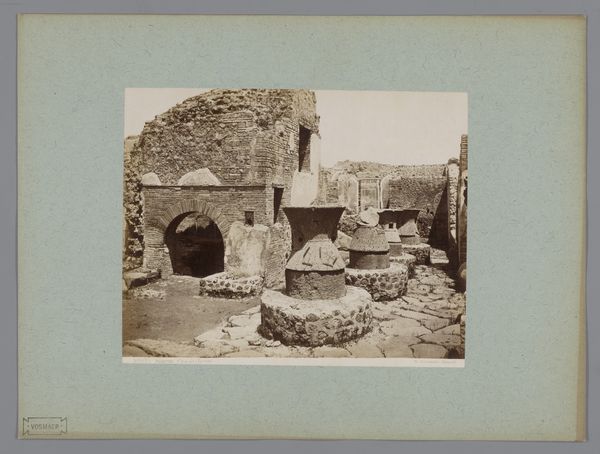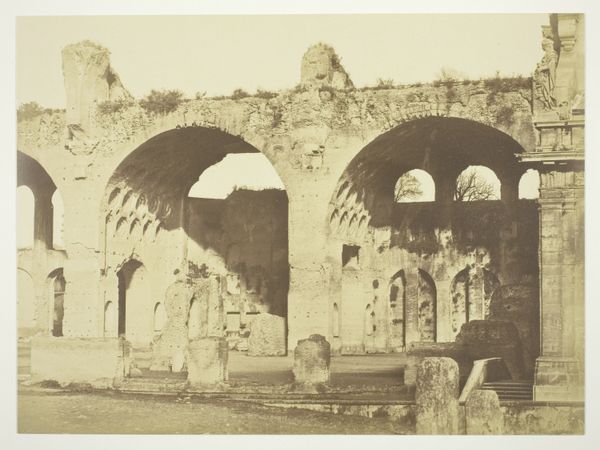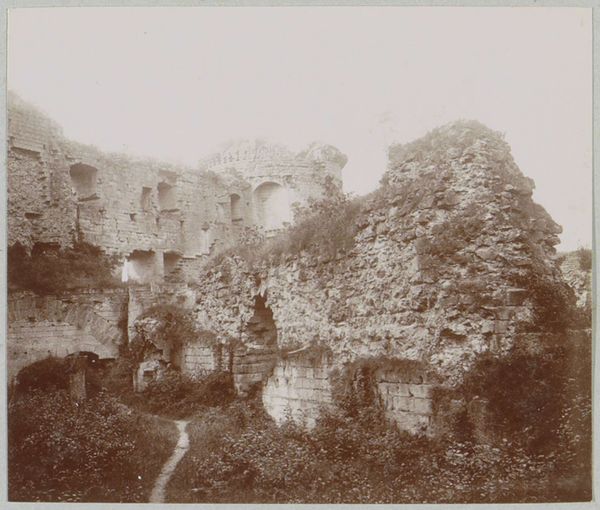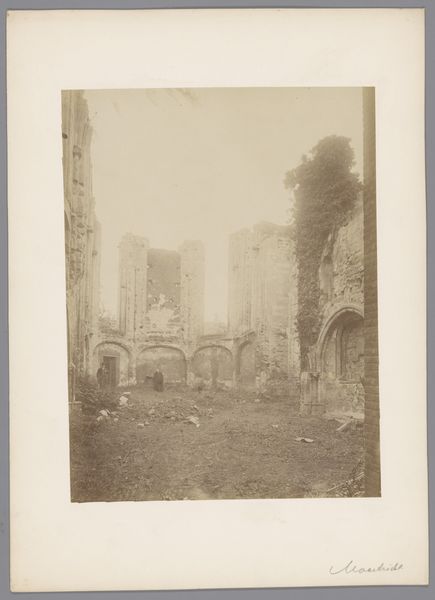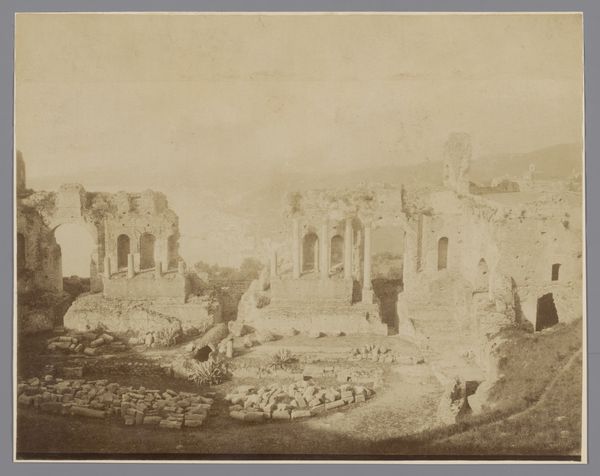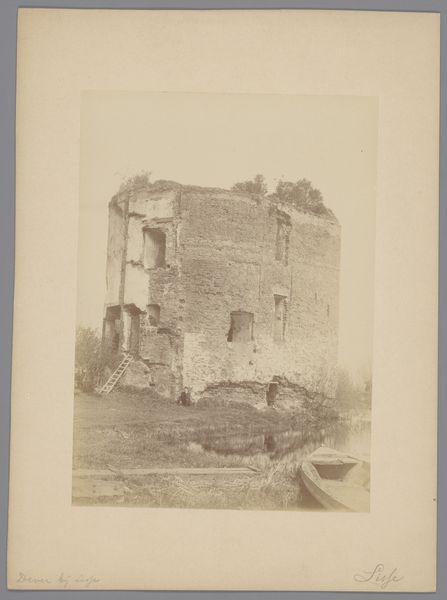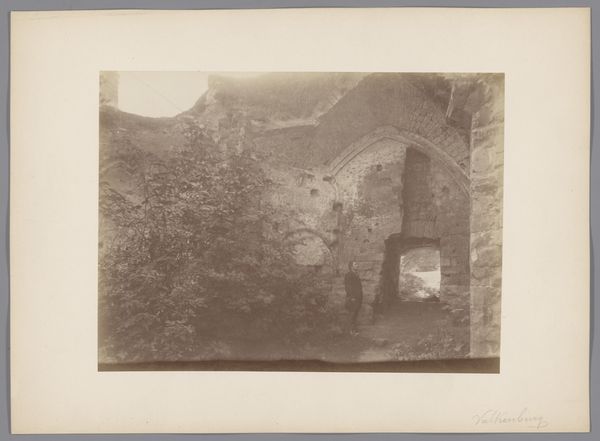
Dimensions: height 356 mm, width 503 mm
Copyright: Rijks Museum: Open Domain
Curator: This is an albumen print dating from between 1850 and 1900, by J.A.G. de Leur. The artwork, "Gezicht op een ruïne van een kasteel" – or "View of a castle ruin," depicts just that, doesn't it? Editor: Indeed. My first impression is how this image conjures a feeling of somber stillness. The ruin seems suspended in time, draped in vegetation, creating a kind of dialogue between decay and resilience. Curator: Notice the deliberate use of light and shadow to emphasize the crumbling stonework. The sharp details are typical of the albumen process. The composition directs the viewer's gaze into the heart of the ruin. Semiotically, we can observe the contrast between the imposing structure and its current state of disintegration. Editor: And consider the historical context. Photography in the mid-19th century provided a new way to document the fading grandeur of Europe’s feudal past. The ivy, so romantically clinging to the walls, serves as a reminder of nature reclaiming spaces marked by past power dynamics. Who had power then, and who has power now? Curator: It is worth examining how the interplay of these elements forms the essence of romanticism. A careful assessment of tone allows us to apprehend the artist's expression and consider formal tensions. Editor: Yes, but beyond the visual pleasure of romantic ruins, we should think about whose stories are absent here. Who lived, worked, and suffered within those walls? This is a moment frozen in time, stripped bare by history and colonialism. It makes you consider how it was printed for a very particular demographic, and one must look critically at what that says about who could consume this art, and who was omitted in the conversation. Curator: An insightful, though potentially unverifiable point. Nevertheless, by scrutinizing form and composition, we can understand the work within a nexus of structures. I feel there is an appreciation that is separate from our need to deconstruct colonial vestiges. Editor: Perhaps. But without critical perspectives, visual appreciation risks legitimizing harmful cultural erasures. Curator: Food for thought! Well, both lenses provide compelling insights into this evocative work, and a necessary opportunity for different appreciations. Editor: Agreed. It allows one to go away from a mere passive listening experience and instead make a step towards personal evaluation.
Comments
No comments
Be the first to comment and join the conversation on the ultimate creative platform.
